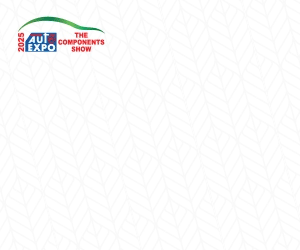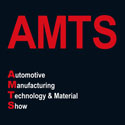Intelligent manufacturing
There is a lot of buzz about artificial intelligence, both positive and negative. Trelleborg believes that from a manufacturing point of view, AI offers many benefits, and it is already beginning to take advantage of them.

It is difficult to pinpoint exactly when Trelleborg started using Artificial Intelligence (AI) to improve its processes and products.
“Our first steps in a tangible way for sealing solutions were probably taken in around 2017,” says Gordon Micallef, Business Unit President within Trelleborg’s sealing solutions business. “At that time, we began to look at the possibilities AI presented centrally, through information systems and process management, creating the Digital Transformation and IoT teams.”
AI offers some immediate opportunities for process improvements, Micallef says, and he sees even more opportunities in the future. “For instance, we’re well on the road to effectively using AI in automated inspection,” he says.
Inspection machines using traditional detection technology look at the surface of a part and identify lighter or darker defects when compared to the general area being inspected.
“This technology has served us well over the years,” says Micallef. “However, there are some sealing geometries and parts where traditional detection methods are not effective.” Currently, Trelleborg has a project coming close to industrialization addressing these challenges.
We take pictures of the parts produced and classify them as good or bad,” he says. “There may be a variety of defect types and sizes, and the machine is taught which parts are correct and which are defective. The more you teach the machine, the better it becomes at recognizing the parts that do not meet a specification.”
Another example of AI in action at Trelleborg is the Shim Wizard. Already in use, based on AI analysis, it recommends the best compound and properties to enhance theperformance of automotive brake shims to design engineers. This results in a reduction of test time, leading to a faster time-to-market. In the pipeline are projects to improve rubber mixing and energy excellence.
“The common thread on all AI applications is data,” Micallef says. “There is no chance of being successful with AI without data — not a small amount, but a huge amount. For any AI application, we need a minimum of one year’s data for high-volume processes.
“It is vital that we are collecting process data that we will require for future AI projects now,” continues Micallef. “We work with the machine suppliers on data capture. For newer machines, this is inbuilt. With oldermachines, additional sensors provide information to external data capture devices. We have developed ActiviTEE, a digital software monitoring overall equipment effectiveness (OEE), to collect this information.”
AI also plays a role in efforts to increase the sustainability and circularity of manufacturing.
“Sensors in manufacturing equipment can gather data on the amount of energy used in a process and combine it with data from production monitoring,” says Micallef. “Comparing consumption with activity and cost, an energy usage profile will optimize the output of a manufacturing machine and minimize the energy used.”
In a circular economy, the aim is to use resources for as long as possible, Micallef says. AI can analyze product life-cycle data to suggest optimal times for refurbishment, recycling or repurposing, thus maximizing the utilization of production equipment.
“In the longer term,” he says, “AI could be used to estimate the carbon footprint of components during manufacturing. By having a clear understanding of the environmental impact, we can potentially look for sustainable alternatives or improve processes to reduce emissions.”
One of the negative perceptions about AI is the fear that it will take over people’s jobs. Micallef admits this is a challenge. “Every technology presents opportunities and threats. Electricity meant that candlestick makers were out of work, but I think that we would all agree that we have a better quality of life with electricity than we did when we lit our homes with candles.”
Rather than reducing the roles that people play in manufacturing, Micallef sees AI enhancing their jobs by allowing workers to avoid the mundane and repetitive and concentrate on more interesting and challenging tasks.
“With a technology as powerful as AI it is good to have boundaries,” Micallef continues. “However, AI presents us with so many prospects for the future improvement and enhancement of our manufacturing processes that we must try and benefit from every opportunity the technology gives us."
autoasia







